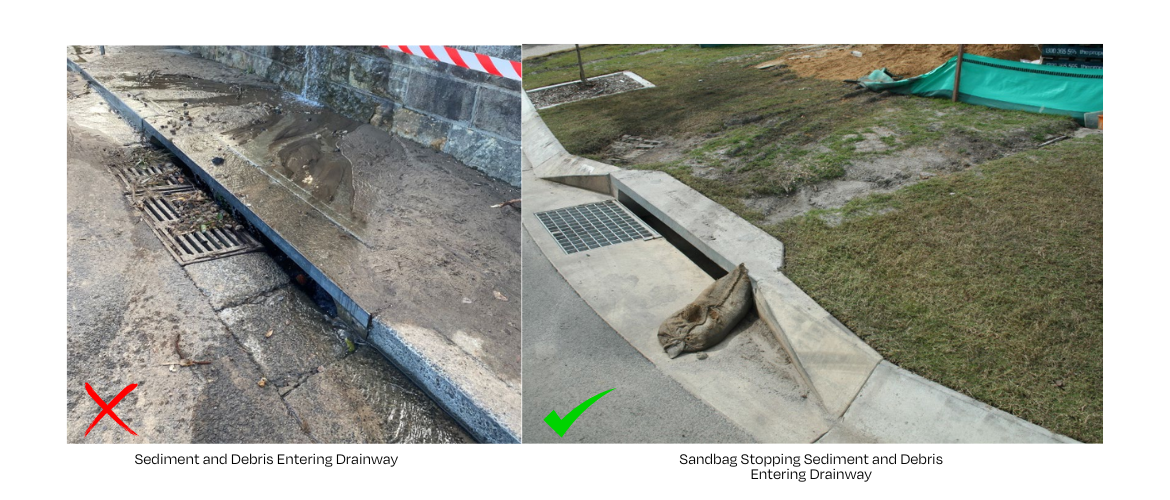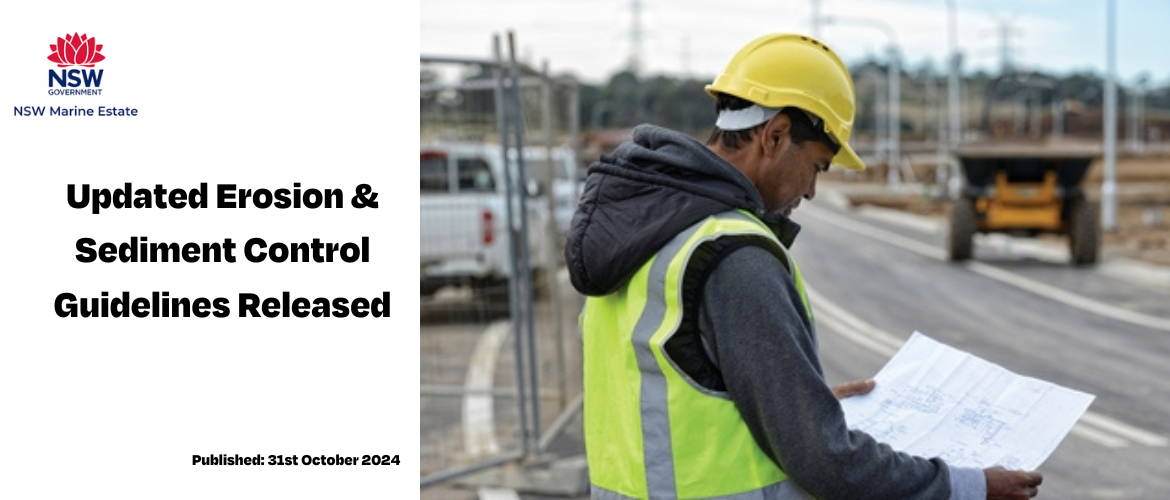The NSW Government has released updated guidelines for managing soil erosion and sediment control on building sites under 2,500 m². NHS is committed to helping you understand and apply these changes to avoid penalties and protect the environment while ensuring your projects stay on track.
The Importance of Proper Erosion and Sediment Control
Soil and sediment runoff from construction sites is a leading cause of water pollution. When washed into drains and waterways, these materials can damage aquatic ecosystems, block stormwater pipes, and cause long-term environmental harm.
Proper site management is essential to reduce these risks. Non-compliance with erosion and sediment control measures can result in penalties, including fines of up to $30,000 for water pollution incidents.
What’s New in the Guidelines?
The Department of Planning, Housing, and Infrastructure has released new Erosion and Sediment Control Guidelines, replacing the 2001 edition by the former Department of Land and Water Conservation. These updates provide modern, practical solutions for managing soil and sediment on building sites.
Key elements of the new guidelines include:
- Preparing an Erosion and Sediment Control Plan (ESCP)
- Techniques to effectively control erosion and sediment
- Maintaining erosion and sediment control measures throughout the project
The updated guidelines apply to sites between 250 m² and 2,500 m². For larger sites, a more comprehensive Soil and Water Management Plan is required, following the "Blue Book" (Managing Urban Stormwater: Soils and Construction, 4th edition).
Applying the Guidelines to Your Project
For many developments, councils require details on how erosion and sediment will be controlled as part of the Development Application (DA) process. An ESCP (Erosion and Sediment Control Plan) developed following these guidelines ensures your site complies with the conditions of development consent.
If the conditions of development consent require the implementation of erosion and sediment controls in accordance with the Guidelines, compliance with the Guidelines is mandatory for your development. If an existing approval refers to the previous editions of the Guidelines, that version must be applied to the development.
For complying development, the implementation of run-off and erosion controls is a condition of the certificate. Application of the Guidelines can assist is complying with these conditions.
What is an Erosion and Sediment Control Plan (ESCP)?
An ESCP is a critical document outlining how soil erosion and sediment runoff will be managed on-site during construction. Section 3.3 of the guidelines specifies what an ESCP should include, such as:
- Site details and key contact information
- Specific erosion and sediment control measures, with maintenance schedules
- Plans for stabilising the site
- Identification of environmentally sensitive areas
- Drawings, specifications, and reporting details
While a Certified Professional is not required to prepare an ESCP, it should be developed by someone with suitable experience.
Compliance and Penalties
Under the Protection of the Environment Operations Act 1997 (POEO), allowing sediment or sediment-laden water to enter waterways—including street gutters, stormwater drains, or creek lines—is considered water pollution. Penalties can range from on-the-spot fines to up to $5 million for serious breaches.
Councils enforce the POEO Act and conditions of development consent, but they also encourage proactive measures to protect waterways and reduce pollution.

Sediment control
Key points:
- Sediment control aims to stop soils and other sediments from a building site from washing into gutters, drains, and waterways.
- Good sediment control can help keep our waterways healthy, minimise loss from building site stockpiles, and improve building site conditions.
- Sediment control measures are required by local government in many areas, and you will need to submit a sediment control plan for approval before starting work.
- The most important action in sediment control is to try to prevent sediment from reaching waterways. The best prevention measure is to minimise site disturbance through careful design and organisation of construction. Use products such as silt fences with hardwood pegs and Geofabric to trap or divert water onsite.
- Cover sand and soil stockpiles on site, use erosion control mats and construct raised exit pads made of crushed rock.
- Minimise the amount of contaminated water that leaves the site. Use barriers (for example, silt fences or filter strips) to trap sediment before it can wash away.
- Divert stormwater away from the disturbed area of the site with coir logs and install the final stormwater drainage system as early as possible during construction.
- Consider erosion control after a building has finished – use erosion mats and planting on steep slopes, use mulch on garden beds, and minimise the extent of concrete paths and other hard surfaces.

Things to know about sediment control
Sediment control measures are used on building sites to prevent sand, soil, cement, and other building materials from reaching waterways. Even a small amount of pollution from a site can cause significant environmental damage by killing aquatic life, silting up streams, and blocking stormwater pipes.
The objectives of sediment control are to:
- minimise erosion by minimising site disturbance
- stabilise disturbed surfaces
- prevent material stockpiles from collecting or discharging sediment
- divert uncontaminated water away from the work area.

Factors That Influence Sediment Control
Your sediment control measures should consider:
- Soil type: Clay soils are prone to environmental harm, while sandy soils may cause drainage issues.
- Slope: Steeper slopes increase erosion risks.
- Extent of disturbance: Larger areas of exposed soil require more controls.
- Weather: Intense rainfall events are becoming more common, making erosion control measures even more critical.
- Site size and location: Small, sloped sites near streets may need stricter controls.
At NHS, we provide the materials and advice you need to comply with erosion and sediment control requirements. From silt fencing and hardwood pegs to coir logs, Geofabric and washed sand, we have the products to keep your site safe and compliant. Visit us in-store or online and contact us to discuss how we can help.



